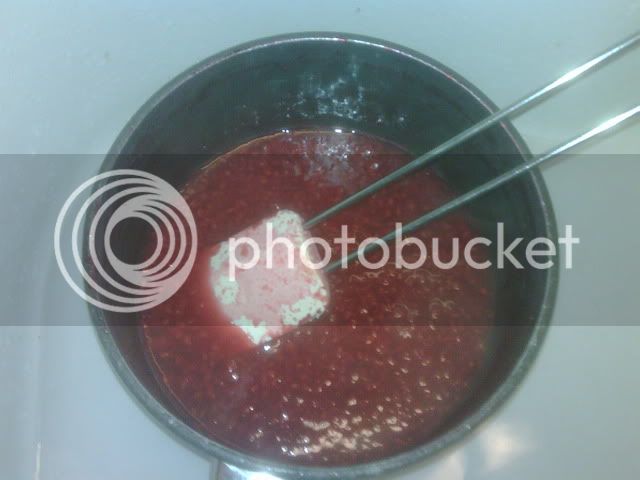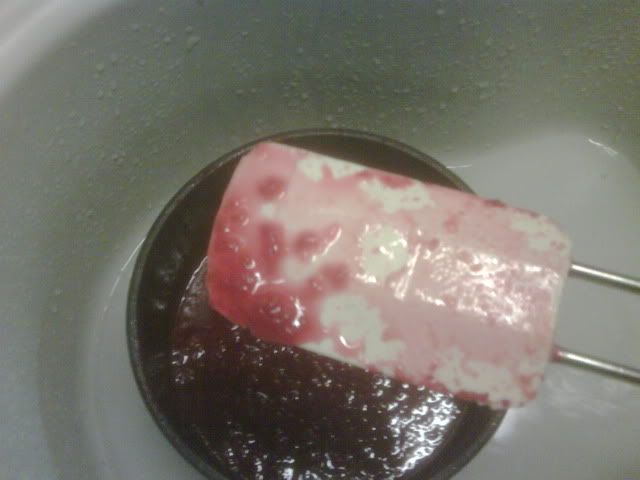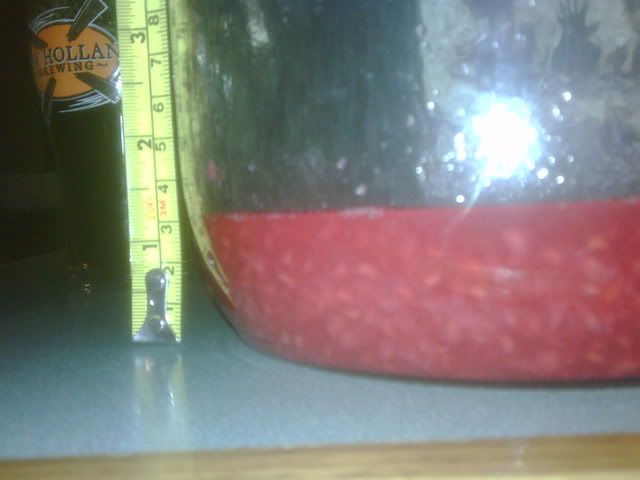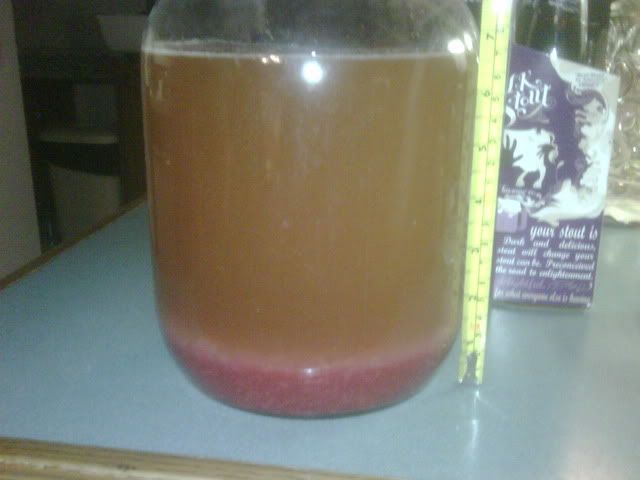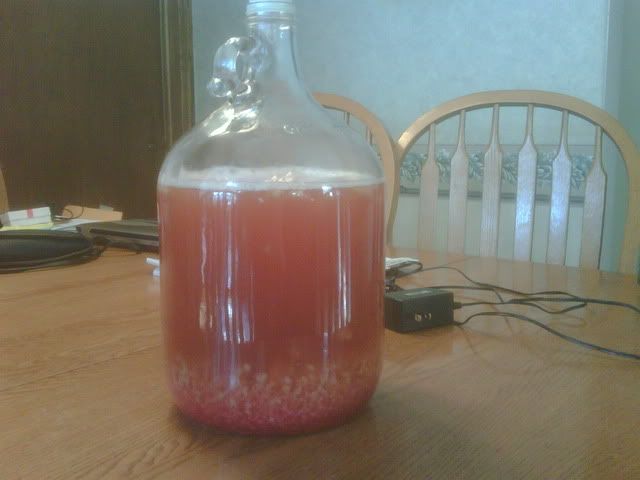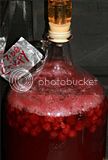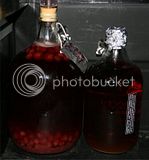Preface: I have not yet tried the finished product, I will let you guys know when I do. This is a beer in progress. It has been in the fermenter for 1 week as of this posting. Two more weeks and it will be in secondary to age for perhaps 2 months, or less, depending on progress of the raspberry flavor.
5gal batch post boil
6.5lbs 2-row/pale malt (I used 2-row)
4.0lbs Wheat (I used white wheat)
4oz CaraFoam (My LHBS has it as Cara-Pils)
8oz package of Malto-Dextrine (added to boil prior to bittering hops)
1oz Tettnang @ 60 mins
No aroma hops
Danstar Nottingham Dry yeast, pitched dry.
90 Min mash @ 150*F, Strike was at 168*F (I lose a lot of heat since its about 10*F outside right now.)
30 Min batch sparge @ 170*F
15qt Mash water = 1.39qt/lb grain
Sparge to gather 7gal pre-boil volume (I had to sparge with 5gal of water)
Boil for 90 minutes.
Pitch yeast at 66*
Primary Fermentation for 14-21 days.
Secondary Fermentation... This is where I feel the difference will be made in this beer. The recommendation is to rack the beer onto 6lbs of raspberry puree and let sit for 6-9 months. I have done this with a beer before and I really could only slightly detect the flavor of the puree in the finished beer. I think this is due to the sugars in the puree being "immediately" consumed by the yeast and the flavor is somehow tied into the sugars(?) therefore the flavor that should be imparted is hindered almost entirely.
My plan is to do this, boil down fresh raspberries into a more gelatin like concoction and rack onto that. I got this idea from making raspberry pie. The flavor of raspberry pie, to me, matches much more closely to the taste of Framboise than does raspberry puree. The puree is simply not strong enough to impart the heavy raspberry flavor to the beer. I have tried straight raspberries before, dumping 3 pints into 3 gallons and the flavor was slight at best. So I feel that boiling down the raspberries to a very jelly-like consistency will do the trick.
I will be adding about 1/2 cup of table sugar per pound of raspberries to the pot when I boil down the mixture. You will want to make sure you don't boil too hard or the raspberry jelly will begin to burn on the bottom of the pot, stir constantly. Use small amounts of water to get the boil going. A few cups usually.
5gal batch post boil
6.5lbs 2-row/pale malt (I used 2-row)
4.0lbs Wheat (I used white wheat)
4oz CaraFoam (My LHBS has it as Cara-Pils)
8oz package of Malto-Dextrine (added to boil prior to bittering hops)
1oz Tettnang @ 60 mins
No aroma hops
Danstar Nottingham Dry yeast, pitched dry.
90 Min mash @ 150*F, Strike was at 168*F (I lose a lot of heat since its about 10*F outside right now.)
30 Min batch sparge @ 170*F
15qt Mash water = 1.39qt/lb grain
Sparge to gather 7gal pre-boil volume (I had to sparge with 5gal of water)
Boil for 90 minutes.
Pitch yeast at 66*
Primary Fermentation for 14-21 days.
Secondary Fermentation... This is where I feel the difference will be made in this beer. The recommendation is to rack the beer onto 6lbs of raspberry puree and let sit for 6-9 months. I have done this with a beer before and I really could only slightly detect the flavor of the puree in the finished beer. I think this is due to the sugars in the puree being "immediately" consumed by the yeast and the flavor is somehow tied into the sugars(?) therefore the flavor that should be imparted is hindered almost entirely.
My plan is to do this, boil down fresh raspberries into a more gelatin like concoction and rack onto that. I got this idea from making raspberry pie. The flavor of raspberry pie, to me, matches much more closely to the taste of Framboise than does raspberry puree. The puree is simply not strong enough to impart the heavy raspberry flavor to the beer. I have tried straight raspberries before, dumping 3 pints into 3 gallons and the flavor was slight at best. So I feel that boiling down the raspberries to a very jelly-like consistency will do the trick.
I will be adding about 1/2 cup of table sugar per pound of raspberries to the pot when I boil down the mixture. You will want to make sure you don't boil too hard or the raspberry jelly will begin to burn on the bottom of the pot, stir constantly. Use small amounts of water to get the boil going. A few cups usually.


